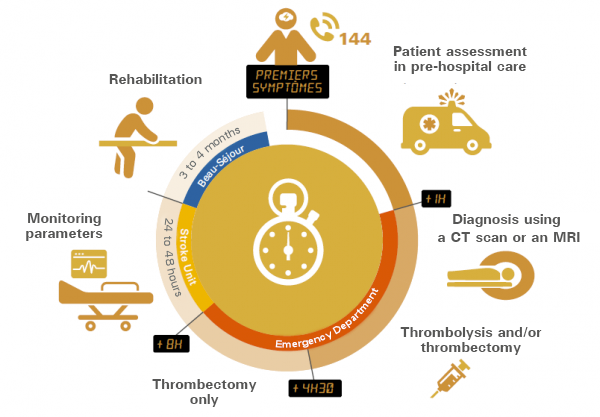In the event of a stroke, it is vital to act quickly. When a vessel is blocked, part of the brain is being deprived of oxygen, and thousands of cells then die every second. The faster the artery is unblocked, the more the brain tissue is preserved and the better the chance of recovery. The HUG is therefore committed to reducing the time between the onset of symptoms and treatment.
Information and awareness campaigns encourage patients to recognize the symptoms and call the emergency number 144 at the first sign of a stroke. Travel by ambulance should be prioritized: 52 minutes on average vs. 95 minutes using the patient’s own transportation. Enhanced collaboration between the various parties involved (nurses, emergency physicians, neurologists and radiologists) speeds up access to the CT and treatment with thrombolysis or thrombectomy.
The stages of hospital care
